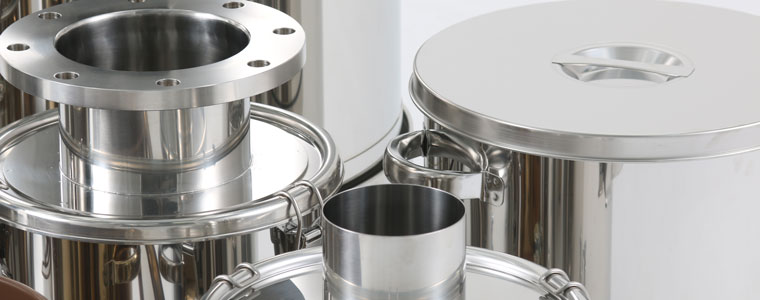With the development of the manufacturing industry, the polishing process is becoming more and more refined, including mechanical polishing, chemical polishing, electrolytic polishing, ultrasonic polishing, fluid polishing, magnetic abrasive polishing, electric spark ultrasonic composite polishing and so on. Surface quality is the most critical factor affecting the product life and performance of any component. Most of the early technologies showed precision in the micron or sub-micron range, surface roughness in the nanometer range, and almost no surface defects in the production of optical, mechanical, and electronic parts.
Common ones are mechanical polishing, chemical polishing and electrochemical polishing. Different industries have different surface polishing requirements for metal parts of different materials.
What is the polishing process?
Polishing refers to the use of mechanical, chemical or electrochemical effects to reduce the surface roughness of the workpiece to obtain a bright and smooth surface. It uses polishing tools and abrasive grains or other polishing media to modify the surface of metal parts.
The polished CNC parts or workpieces have smooth surface and good reflection effect. After polishing, the thickness of the workpiece will be reduced and it will be easily scratched. So the surface must be cleaned with fine flannel, suede, velvet and special detergent.

Polishing process type
Mechanical polishing
Mechanical polishing is a polishing method that relies on the cutting and plastic deformation of the surface of the material to obtain a smooth surface by removing the polished protrusions. Mechanical polishing generally uses grinding rods, felt wheels, and sandpaper, mainly manual operation. Special parts such as rotating bodies can use auxiliary tools such as turntables, and ultra-precision polishing can be used for high surface quality requirements. Ultra-precision polishing uses a special abrasive tool to rotate at high speed on the surface of the workpiece in a polishing liquid containing abrasives. The surface roughness of 0.008μm can be achieved by using this technology, which is the best among various polishing methods.
Advantages of mechanical polishing
– high brightness
– Improve surface finish
-Reduce product adhesion
– Better surface cleanliness
– Higher aesthetic appeal
Disadvantages of mechanical polishing
– High labor intensity
– The polishing process can be harmful
– Unable to handle complex parts
– The gloss cannot be consistent and cannot last
– May be susceptible to corrosion
– The mechanical strength of the surface is weakened
Chemical polishing
In chemical polishing, the micro-protruding part of the material surface is preferentially dissolved in the chemical medium than the concave part, so a smooth surface can be obtained. In the chemical polishing process, the influence of the solution and the galvanic couple on the metal surface leads to the formation of a passivation layer. The direct result of chemical polishing is the smooth polishing of micro-roughness and the parallel dissolution of the upper layer.
The method can polish workpieces with complex shapes, and can polish multiple metal parts at the same time, with high efficiency. The surface roughness obtained by chemical polishing is generally Ra10μm.
Advantages of chemical polishing
– Can polish workpieces with complex shapes
– high efficiency
– Can polish multiple parts at the same time
-Low equipment investment
– Good corrosion resistance
Disadvantages of chemical polishing
-Uneven brightness
– Difficult to heat
-Gas is easy to overflow
– May release harmful gases
– It is difficult to adjust and regenerate the polishing liquid
Electrolytic polishing
Electrolytic polishing is also called electrolytic polishing, electrochemical polishing or anode polishing. The basic principle of electrolytic polishing is the same as that of chemical polishing, that is, the small protrusions on the surface are dissolved by the dissolving liquid to obtain a smooth surface. However, compared with chemical polishing, the influence of the cathode reaction can be eliminated, and the polishing effect is better. Electrolytic polishing removes material from metal workpieces, and reduces surface roughness and improves surface finish by leveling micro peaks and valleys.
Advantages of electrolytic polishing
– Long lasting gloss
– Same color inside and outside
– Can handle a wide range of materials
-Low cost and short cycle
-Low pollution
– High corrosion resistance, will not deform the metal surface
Disadvantages of electropolishing
– High equipment investment
– Complex pre-polishing process
– Poor versatility of electrolyte
– Complex parts require tools and auxiliary electrodes
– Mass production requires cooling facilities

What is the main purpose of the polishing process?
Polishing helps create shiny and smooth surfaces on custom manufactured parts. It helps to enhance the appearance of parts while preventing corrosion (by removing oxidation), improving cleanability and reducing part adhesion. The polished surface finish also allows the clean material surface to have significant reflective properties. All of these are designed to ensure that the parts meet customer expectations
What are the differences between mechanical buffing and mechanical polishing
Mechanical buffing and mechanical polishing: Although both can improve the surface finish, buffing and polishing are different in the surface treatment of metal parts.
buffing is the process of cutting the surface of metal parts by the rotation of a special grinding wheel (or belt) with abrasives. Buffing can remove burrs, rust, scratches, weld scars, weld beads, oxide scales, etc. on the surface of the parts. Various macro defects to improve the flatness of parts.
Polishing is the process of processing the surface of parts with a polishing wheel mounted on a polishing machine and coated with a polishing paste. The purpose of polishing is to further reduce the surface roughness of the parts and obtain a bright appearance. Polishing is generally carried out on a flat surface without significant abrasion to the substrate.


